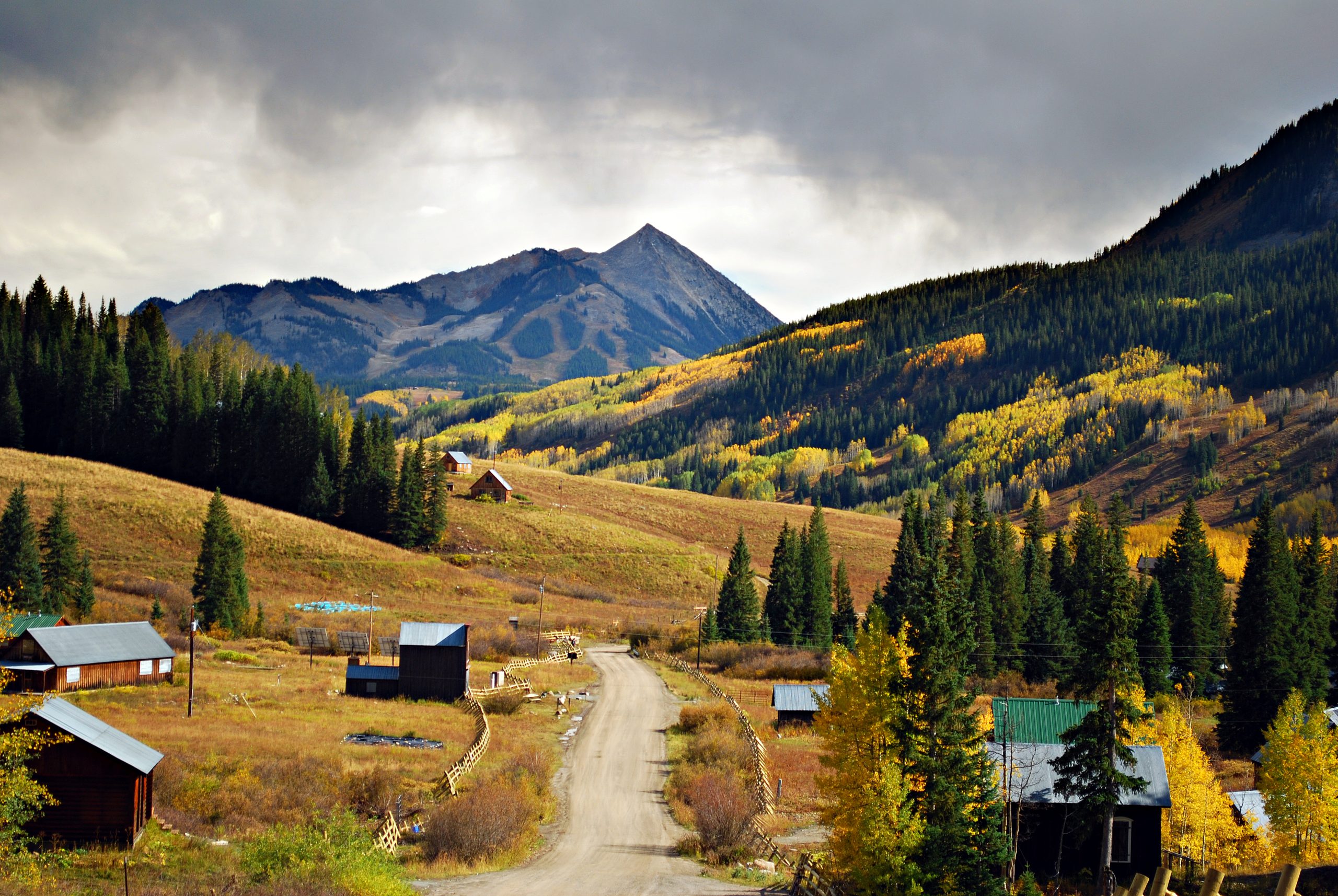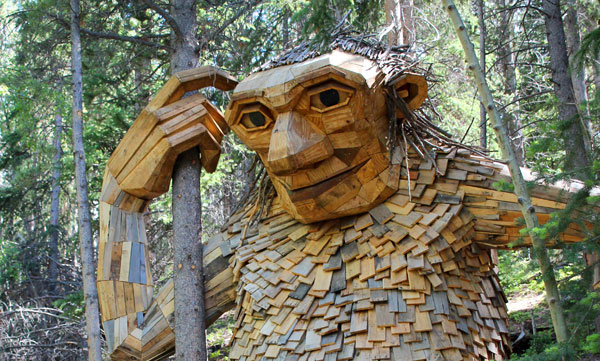Explore Ghost Towns in Colorado
Ghost Towns
More than 1500 ghost towns in Colorado have been abandoned over the years for many reasons. Most dried up when the mining industry did—the mills, shops, and other businesses had no one to sell to when the miners packed up shop. Others were built to be resort towns and abandoned when the tourists never showed up, and some, which were stagecoach stops, no longer needed to exist once the railroad came into existence. A few are even underwater.
Not all of the ghost towns in Colorado still bear visible remains. Many are marked only by a few remaining gravestones or overgrown cemeteries, and some are only noted on old maps. But those that still exist can be visited by foot, off-road vehicle, or car. Check out one of these abandoned ghost towns this summer.St Elmo, Ghost Town - Buena Vista
St. Elmo is one of the best-preserved ghost towns in existence, and it’s accessible by car from nearby Buena Vista. With 43 buildings and storefronts that look like a scene right out of a Wild West movie set, including a saloon, a jail, homes, and stores, St. Elmo was founded in 1880 and abandoned in the 1950s after train service to Chalk Creek Canyon was closed. These days, the St. Elmo General Store is open seasonally, as is the Ghost Town Guest House, so while this town isn’t technically abandoned, it’s still definitely worth a trip.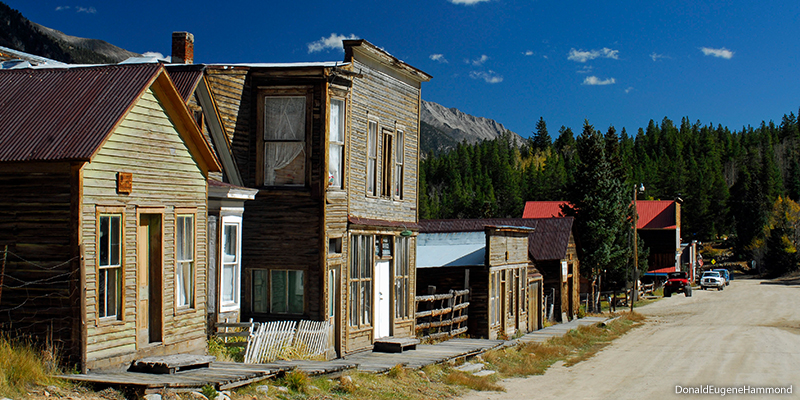
Animas Forks - Silverton
Animas Forks was a bustling mining town, but even during its heyday in the 19th century, residents moved to Silverton each year to wait out the cold, long winters in a place with a little lower altitude and a little warmer weather. Animas Forks has been a ghost town since the 1920s and is accessible by vehicle on the Alpine Loop, an unpaved road from Silverton to Lake City. If you’re coming to explore Animas Forks with a 2WD vehicle, you’ll have to come from Silverton, and summer is about the only time you’ll be able to make the drive. Those with 4WD vehicles should have an easier drive and a longer time window.Carson - Lake City, Ghost Town
At high elevations, winter in Colorado can be rough, and the settlers of Carson, Colorado, a mining camp near Lake City at 11,600 feet, decided it was too much for them. Carson is one of the most difficult ghost towns to access in Colorado, and you’ll need a 4x4 vehicle if you plan on trying to check out its remains.Independence - Aspen
At about 11,000 feet, the ghost town of Independence, located near Aspen, is only accessible two to three seasons a year. Like Carson, Independence fell victim to harsh winters as its residents left for the more accessible and mild climate of Aspen, but in its heyday, Independence had over 1500 people and even a newspaper. Today, you’ll find the remnants of a stable, general store, stamp mill, and several homes.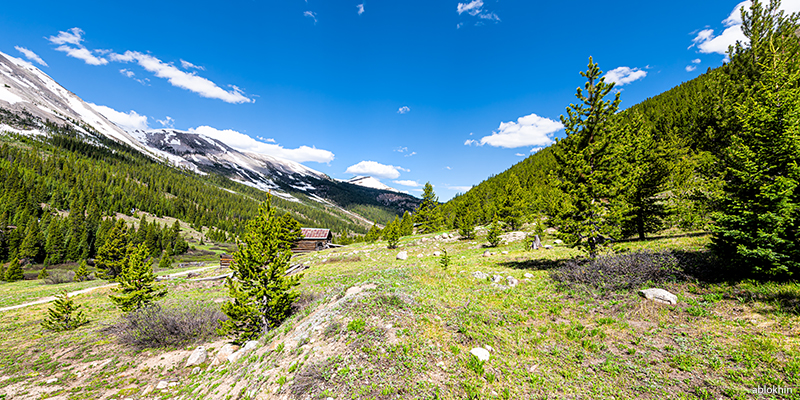
Climax - Leadville
Climax got its name because it is at the summit of Fremont Pass, and when it was populated, it was the highest human settlement in the United States. Mining operations still exist in Climax, though the settlement is abandoned. Though none of the structures remain on-site, houses and buildings from the former town can be found in Leadville, where they were moved.Ohio City - Pitkin
Ohio City is only a semi-ghost town because a scant handful of people still live there. This means it’s much more easily accessible than other ghost towns on this list because you can get there by car. It’s had a roller coaster of a history—Ohio City was first founded as a gold mining town, but when gold dried up, it became a ghost town until the silver boom, and when silver mining collapsed, everyone left until they found another lode of gold. But since the early 20th century, this tiny town has mostly been home to some summer getaway cabins and camping.Homestead Meadows - Estes Park
In the 19th century, the Homestead Act allowed anyone to settle on 160 acres of land, and after five years of improving the land, they could claim the title. Near Estes Park, several ranchers did just that, and though the ghost town of Homestead Meadows doesn’t have any municipal buildings like a post office or general store, it does have several remains of old ranch houses and buildings. Homestead Meadows is accessible via the Lion Gulch Trailhead. Just follow the trail and the gulch for 2.5 miles to find the structures, some of which still have furniture and farming equipment still inside.Teller City - Walden
Only a few cabins and building foundations are left of what once was Teller City in North Park, Colorado, and it’s dispersed throughout Roosevelt National Forest. The trees that have cropped up in and around the ghost town completely belie how bustling and thriving it once was. Teller City was once the largest town in the Grand Lake region, with almost 2000 residents and several successful businesses, including a 40-room hotel. By the late 1800s, after the silver boom ended, the population dwindled down to just 300 people, and by the turn of the 20th century, it became a ghost town. You can find Teller City via a drive on an unpaved road (the last 3 miles require 4WD; otherwise, you’ll have to go on foot), and the ghost town itself is dispersed throughout the woods, so you’ll want to devote at least an hour or two to exploring what’s left of it.Iola - Gunnison County
In the 1960s, the small town of Iola was flooded beneath the waters of the Blue Mesa Reservoir. Today, you can swim, boat, paddleboard, and have fun just above the spot where people once lived and worked and went about their daily business—unless it’s a drought-ridden year like 2018 when the reservoir's water level fell so low that some of the buildings and foundations were revealed after decades underwater.Buckskin Joe
Nearby Fairplay Colorado (once known as South Park City) was a town called Buckskin Joe. Like all other gold strike towns, it boomed in the 1860's. It even prospered with over 3,000 served by several saloons, gambling halls, and traveling minstrel shows. The main street was lined with stores, a post office, an assay office, a courthouse, two banks, a newspaper, a mil, and three hotels. The mining district reportedly produced 16 million dollars in gold from 1859 until the mill closed in 1866. High-elevation weather conditions made a living and traveling in and out so difficult that it soon gave way to the now-surviving town of Fairplay (aka South Park). All that is left of the original Buckskin Joe today is the cemetery and its memories.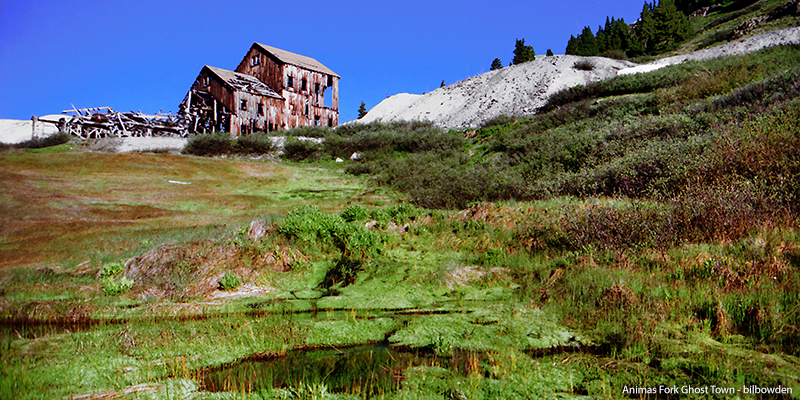
Red Mountain Mining District ghost towns of Ironton and Red Mountain City
The Red Mountain Mining District is in the San Juan Mountains of southwestern Colorado, USA (Red Mountain Pass or Route 550, the Million Dollar Highway). The area was known for its rich mineral deposits of gold, silver, lead, zinc, and copper and was a booming mining region in the late 19th and early 20th centuries. Ironton and Red Mountain City are two of the most famous ghost towns in the Red Mountain Mining District. Ironton was founded in 1883 as a smelting town for the nearby mines. At its peak, it had a population of over 1,000 and featured several businesses, including a school, post office, and general store. However, the town began to decline after the smelter closed in 1922, and by the 1950s, it was completely abandoned. Red Mountain City, located about a mile from Ironton, was founded in the early 1880s as a mining camp. It quickly grew into a bustling town with over 1,000 people, featuring several businesses and amenities such as a school, saloons, and hotels. However, the town suffered from several devastating fires over the years, and by the 1920s, most of the population had left. Ironton and Red Mountain City are open to tourists and historians, who can explore the remnants of these once-thriving mining towns and learn about their rich history.Visiting Colorado Ghost Towns
Colorado is home to hundreds more ghost towns than just the ones on this list (over 600 in the state still bear visible remains), and exploring them is a great way to get outside this summer. Before you go, make sure to do your research to be sure your vehicle will be able to make it, or be aware of how long of a hike, bike ride, or cross-country ski trek it will take for you to reach the ghost town. Always leave no trace when visiting natural and historical sites, and if you hear the ghostly sounds of raucous laughter coming from the ruins of an old saloon or an unearthly wail from an abandoned cemetery, remember, it’s just the wind. Probably.By Emily Krempholtz

